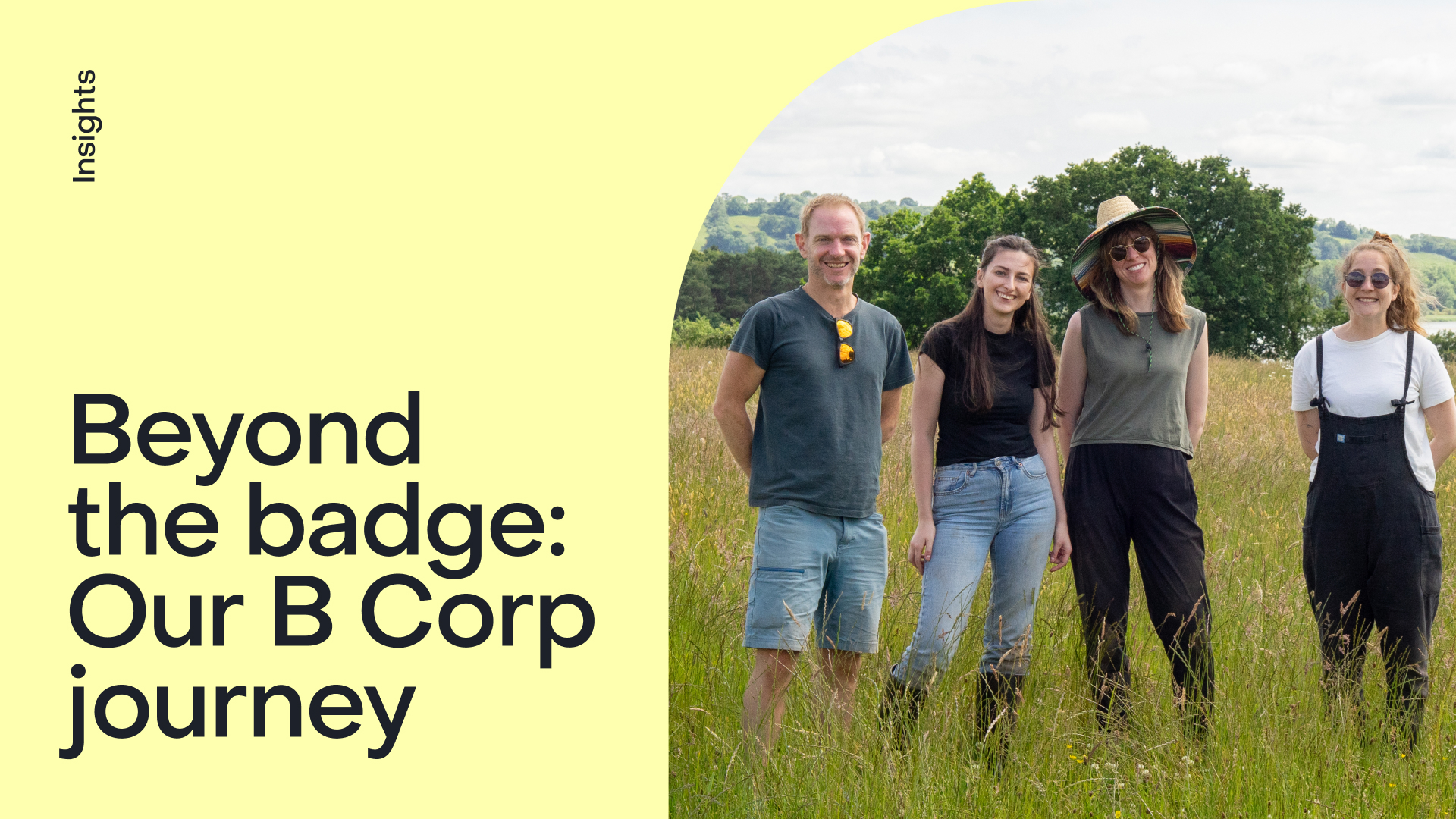A guide to finding your climate tech startup's voice
A clear defined organisational voice is an essential pillar of your brand, how do you uncover yours?

Emma Higgins

An organisation's voice is the consistent tone, style, and personality it uses to communicate its values and connect with its audience across all platforms. It’s the cornerstone of your brand, helping create a recognisable and trustworthy identity, build emotional connections with your audience, ensure consistency across all communications, and differentiate you from the 3,200 other climate tech startups that currently exist globally.
But how do you uncover your voice?
1. Define Your Mission and Values
Your mission is the foundation of your voice. Start by clearly articulating the problem your startup is solving and how it contributes to addressing climate change. Align this with the core values that guide your business decisions (e.g., sustainability, transparency, innovation). Your voice should reflect your purpose and the urgency of climate action.
- Questions to ask: What are we passionate about? How are we solving a real-world problem? What core principles drive us?
2. Understand Your Audience
Knowing your audience is critical to shaping your voice. Different stakeholders will have varying concerns and interests—investors, customers, policymakers, and climate advocates will need different messaging. Your voice should resonate with these groups by addressing their specific concerns while staying true to your values.
- Identify audience segments: Are you speaking to environmentally-conscious consumers, tech-savvy investors, or policy influencers?
- Tailor your tone and messaging: Scientific and data-driven for investors, emotional and values-driven for consumers, or technical and solution-orientated for policymakers.
3. Clarify Your Unique Value Proposition
The climate tech space is competitive, so you need to be clear about what sets you apart. Are you offering a breakthrough technology, a scalable solution, or a radically different approach? Your voice should highlight this differentiation in a way that shows how your startup is uniquely positioned to make an impact.
- How to approach: Define what makes your product or solution special in terms of technology, approach, sustainability, or scalability.
4. Develop a Storytelling Framework
Storytelling is a powerful tool for engaging your audience emotionally. Develop a compelling narrative that connects with people on both rational and emotional levels. Your story should focus on the urgency of the climate crisis, the impact your solution can have, and the people behind your startup.
- Hero's Journey: Frame your startup as the hero tackling an urgent climate challenge, with setbacks, learning moments, and eventual successes.
- Impact stories: Share real-world examples, pilot programs, or success stories of how your tech makes a tangible difference.
5. Choose a Tone and Style Consistent with Your Brand
Your tone should reflect your mission, values, and audience. Climate tech startups often take on one of these tones:
- Inspiring and optimistic: If you want to focus on hope and innovation, this approach can encourage action and partnership.
- Urgent and direct: Especially when addressing the severity of the climate crisis or presenting your solution to investors or policymakers.
- Scientific and authoritative: To build credibility with a more technical or industry-focused audience.
Maintain a consistent style across all platforms—website, social media, press releases, and pitches—to ensure people recognise and connect with your voice.
6. Engage with the Climate Tech Ecosystem
Build relationships with other stakeholders in the climate tech ecosystem—other startups, investors, NGOs, policymakers. Use your voice to contribute to the larger climate conversation by participating in events, writing thought leadership content, and engaging on social media. Thought leadership will amplify your voice and position you as a leader in the space.
- How to engage: Publish blogs, whitepapers, and op-eds on key industry topics, or participate in panels and discussions at climate tech conferences.
7. Incorporate Authenticity and Transparency
Climate tech startups operate in a space where authenticity is key. Be open about the challenges and limitations of your technology, while demonstrating commitment to improvement. Avoid greenwashing by backing up claims with real data and showing the long-term vision for your impact.
- Build trust: Share progress reports, data-driven updates, and be transparent about your journey, including setbacks.
9. Test and Refine
Finding your voice isn’t a one-time task; it evolves as you grow. Test different messages and platforms, then gather feedback from customers, partners, and investors. Continuously refine your voice based on what resonates most with your audience.
- How to iterate: Use social media, surveys, and A/B testing for messaging to understand what engages your audience best.
10. Communicate Your Impact
Your ultimate goal is to showcase how your climate tech solution is making a measurable difference. Regularly update your audience on milestones and achievements, demonstrating your ongoing commitment to climate action.
We can help you uncover your voice and build your brand - guiding you every step of the way to make sure you’re developing a strong, authentic identity that resonates with stakeholders and reinforces your mission and impact.


.jpg)